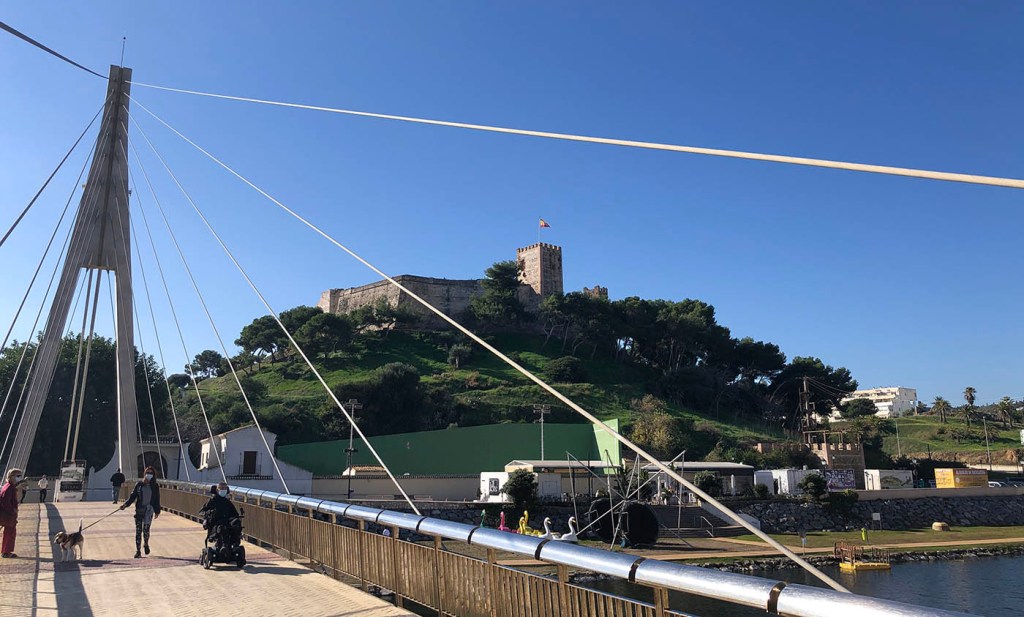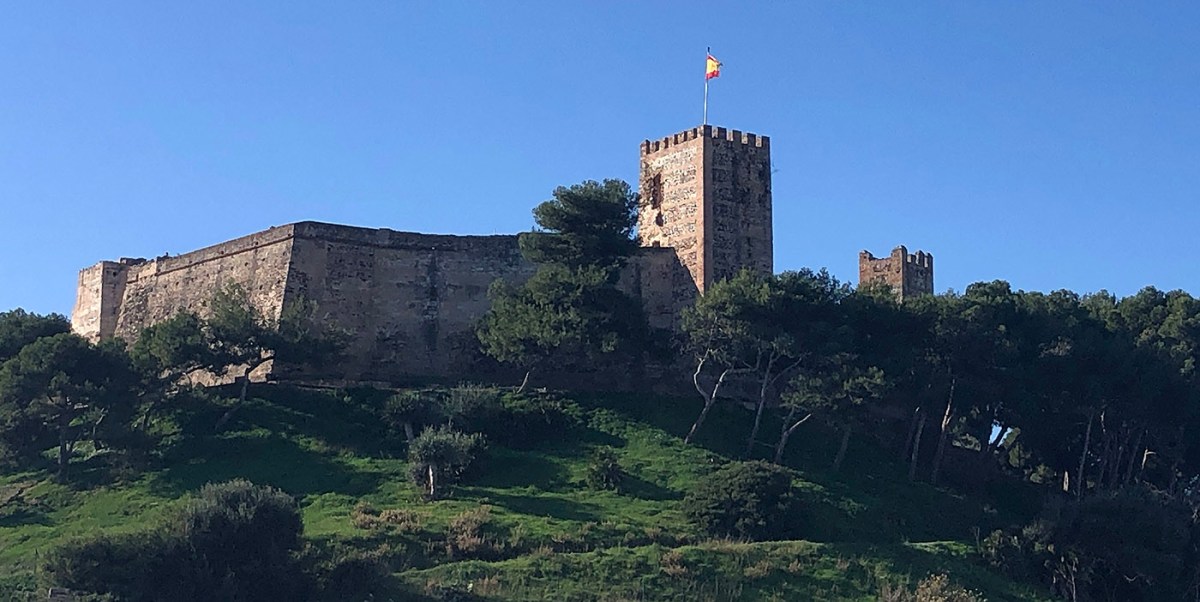La versión en español está después de la versión en inglés.
SOME OF YOU MAY KNOW we have our very own castle here in Fuengirola, Castillo Sohail. Read on and you’ll understand why I believe it should actually be our very own castle.
It was built by Abd al-Rahman III in 956 AD during Moorish rule of the Iberian Peninsula and, after years of neglect, was restored in 2000. I haven’t been inside the castle for a while and was pleased and surprised to see the continued improvements and discoveries. There are also ongoing digs outside the castle exposing structures from Phoenician times (1100 BC to 300 BC).
San Geraldo has family connections to Castillo Sohail. Abd al-Rahman III’s grandfather, Abdulla Ibn Muhammed, was the first husband of San Geraldo’s 34-greats-grandmother, Onneca Fortúnez of Pamplona, a Basque princess. She was a rare example of a Christian princess marrying Muslim royalty.
The union created strong ties between the Muslim and Christian rulers of the Iberian Peninsula, as well as a son and two daughters. During that time, Onneca was known by her Arab name, Dur, which means pearl.
Given all San Geraldo’s connections, I didn’t expect it to be so difficult to get the keys to the castle.
.
ALGUNOS DE VOSOTROS PODÉIS SABER que tenemos nuestro propio castillo aquí en Fuengirola, Castillo Sohail. Sigue leyendo y entenderás por qué creo que debería ser nuestro propio castillo.
Fue construido por Abd al-Rahman III en 956 d.C. durante el dominio árabe de la Península Ibérica y, después de años de abandono, fue restaurado en 2000. No he estado adentro por un tiempo y me complació y sorprendió ver las continuas mejoras y descubrimientos. También hay excavaciones en curso fuera del castillo que exponen estructuras de la época fenicia (1100 a.C. a 300 a.C.).
San Geraldo tiene conexiones familiares con Castillo Sohail. El abuelo de Abd al-Rahman III, Abdulla Ibn Muhammed, fue el primer marido de la 34-tatarabuela de San Geraldo, Onneca Fortúnez de Pamplona, una princesa vasca. Ella era un raro ejemplo de una princesa cristiana que se casaba con la realeza musulmana.
La unión creó fuertes lazos entre los gobernantes musulmanes y cristianos de la Península Ibérica, así como un hijo y dos hijas. Durante ese tiempo, Onneca era conocida por su nombre árabe, Dur, que significa perla.
Dadas todas las conexiones de San Geraldo, no esperaba que fuera tan difícil conseguir las llaves del castillo.










